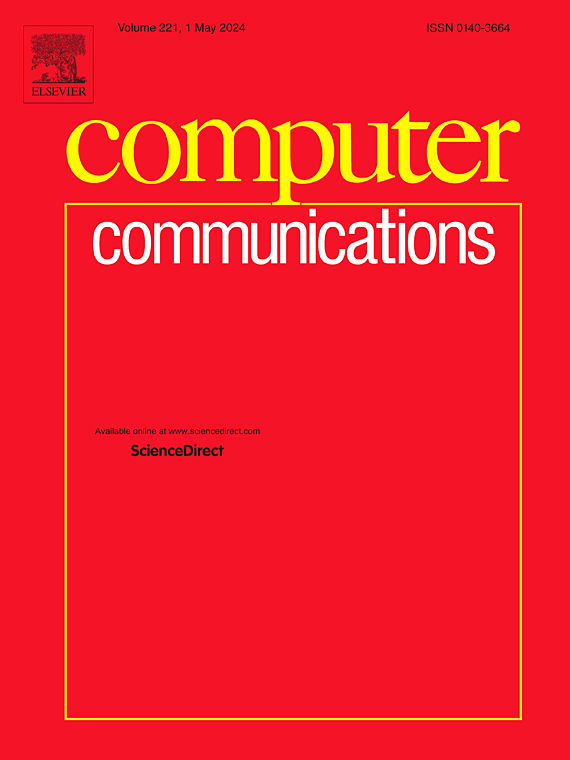物联网环境下智能边缘路由的图卷积网络和深度强化学习
IF 4.5
3区 计算机科学
Q1 COMPUTER SCIENCE, INFORMATION SYSTEMS
引用次数: 0
摘要
物联网(IoT)的快速发展增加了各种应用对服务质量(QoS)的需求。为了满足这些高QoS要求,智能路由算法应运而生。然而,现有算法面临着训练时间长、泛化能力有限以及处理高维连续动作空间困难等挑战,阻碍了它们获得最优路由解的能力。为了解决这些挑战,本文提出了一种新的智能边缘路由优化(RO)算法,该算法将使用图卷积网络(GCN)的节点分类(NC)与基于深度强化学习(DRL)的路径选择(PS)相结合。该方法旨在智能选择最优路径,同时满足复杂、动态变化的物联网边缘网络环境(IENEs)的高QoS要求。NC模块通过将网络拓扑和链路状态信息转化为节点特征,有效滤除性能较差的节点,降低了RO算法的计算复杂度,增强了算法的泛化能力。为了应对高维连续动作空间并满足QoS要求,PS模块利用NC中精炼的网络拓扑和状态信息来确定最优路由路径。仿真结果表明,该算法在平均网络延迟、丢包率和吞吐量等关键性能指标上优于最先进的方法。此外,该算法在收敛速度和泛化能力方面也有了明显的提高。本文章由计算机程序翻译,如有差异,请以英文原文为准。
Graph convolutional networks and deep reinforcement learning for intelligent edge routing in IoT environment
The rapid growth of the Internet of Things (IoT) has increased the demand for Quality of Service (QoS) in various applications. Intelligent routing algorithms have emerged to meet these high QoS requirements. However, existing algorithms face challenges such as long training time, limited generalization capabilities, and difficulties in handling high-dimensional continuous action spaces, which hinder their ability to achieve optimal routing solutions. To address these challenges, this paper proposes a novel intelligent edge routing optimization (RO) algorithm that integrates node classification (NC) using a graph convolutional network (GCN) with path selection (PS) based on deep reinforcement learning (DRL). This approach aims to intelligently select optimal paths while meeting high QoS requirements in complex, dynamically changing IoT Edge Network Environments (IENEs). The NC module reduces the computational complexity and enhances the generalization capability of the RO algorithm by transforming network topology and link state information into node features, effectively filtering out low-performing nodes. To cope with high-dimensional continuous action spaces and meet QoS requirements, the PS module utilizes the refined network topology and state information from NC to determine optimal routing paths. Simulation results show that the proposed algorithm outperforms state-of-the-art methods in key performance metrics such as average network delay, packet loss rate, and throughput. In addition, it shows significant improvements in convergence speed and generalization ability.
求助全文
通过发布文献求助,成功后即可免费获取论文全文。
去求助
来源期刊

Computer Communications
工程技术-电信学
CiteScore
14.10
自引率
5.00%
发文量
397
审稿时长
66 days
期刊介绍:
Computer and Communications networks are key infrastructures of the information society with high socio-economic value as they contribute to the correct operations of many critical services (from healthcare to finance and transportation). Internet is the core of today''s computer-communication infrastructures. This has transformed the Internet, from a robust network for data transfer between computers, to a global, content-rich, communication and information system where contents are increasingly generated by the users, and distributed according to human social relations. Next-generation network technologies, architectures and protocols are therefore required to overcome the limitations of the legacy Internet and add new capabilities and services. The future Internet should be ubiquitous, secure, resilient, and closer to human communication paradigms.
Computer Communications is a peer-reviewed international journal that publishes high-quality scientific articles (both theory and practice) and survey papers covering all aspects of future computer communication networks (on all layers, except the physical layer), with a special attention to the evolution of the Internet architecture, protocols, services, and applications.
 求助内容:
求助内容: 应助结果提醒方式:
应助结果提醒方式:


